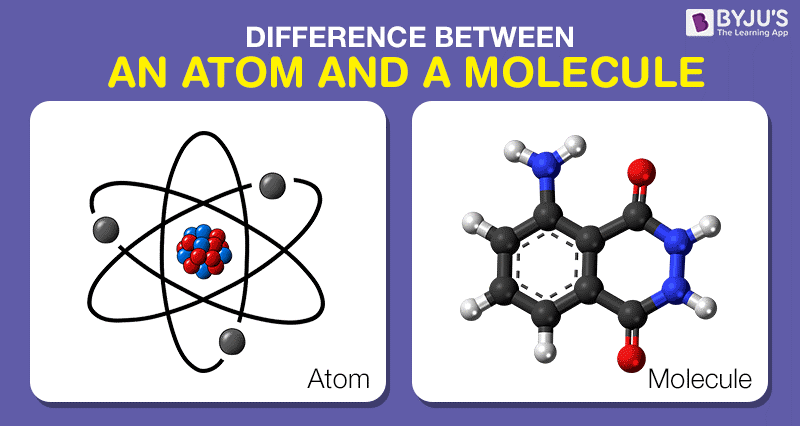To the untrained eye, the concepts of matter and atoms may seem synonymous, yet they exist within an intricate hierarchy of physical reality. Imagine, if you will, matter as a grand tapestry woven from countless individual threads—each thread representing an atom. This metaphor illustrates the profound relationship between matter and atoms, wherein atoms serve as the fundamental building blocks of all matter, yet the two are far from interchangeable. Understanding the distinctions between matter and atoms necessitates a nuanced exploration of their definitions, properties, and roles in the universe.
Defining Matter
At its core, matter encompasses anything that possesses mass and occupies space. This definition extends to a vast array of substances, including solids, liquids, gases, and plasma. Matter can be observed in everyday objects, from the delightful complexity of a slice of chocolate cake to the inertia of a parked vehicle. Its physical presence is palpable, characterized by properties such as volume and density, along with the perceptible ability to interact with energy.
Furthermore, matter is subject to the laws of physics, exhibiting behavior that can be predictable or chaotic, depending on a plethora of influencing factors. In a broader context, matter is essential for the formation of planets, stars, and galaxies, forming the nucleus of our universe. Moreover, it undergoes transformations, shifting states from ice to water to vapor, demonstrating its dynamic nature.
Introducing Atoms
Atoms, on the other hand, are exceedingly minute units of matter, thus rendering them a more specific entity in the vast realm of physical existence. An atom consists of a nucleus composed of protons and neutrons, surrounded by a cloud of electrons that orbit around this central core. This subatomic arrangement is akin to a miniature solar system, where the nucleus serves as the sun, and the electrons represent the planets dancing in their orbits.
The uniqueness of each atom is governed by the number of protons in its nucleus, known as the atomic number. This simple yet elegant system categorizes elements on the periodic table, which serves as the Rosetta Stone of chemistry. When atoms bond with one another, they form molecules, leading to the emergence of diverse forms of matter. Thus, while atoms are the elemental constituents of matter, they embody a distinct identity separate from the larger concept of matter.
Properties of Matter vs. Properties of Atoms
The properties of matter are often macroscopic, observable with the naked eye. Attributes such as color, texture, and state are readily recognizable in a vast array of materials. For instance, a block of ice may be solid, clear, and cold, showcasing its matter-related characteristics. These macroscopic properties arise from the collective behavior of countless atoms interacting with one another and external forces.
In contrast, the properties of atoms are grounded in the subatomic realm. Atomic properties include atomic mass, charge, and electronegativity—all of which are not immediately visible but significantly influence physical and chemical properties of the matter formed from these atoms. The behavior and interaction of individual atoms dictate how substances react during chemical reactions, encompassing everything from combustion to biological processes.
The Role of Energy
Energy plays a pivotal role in the interaction between matter and atoms, dictating the transformations that occur at both macroscopic and microscopic levels. When considering matter, energy can manifest in various forms—kinetic energy in moving objects, potential energy in stored positions, and thermal energy in temperature variations. Transformations between these energy forms occur frequently, reinforcing the dynamic nature of matter.
Conversely, at the atomic level, energy influences the behavior of electrons within their orbits and the bonding of atoms into molecules. The absorption or release of energy during chemical reactions alters the arrangements of atoms, fundamentally shifting the matter they constitute. This interplay of energy and atomic structure presents a kaleidoscope of possibilities that contribute to the variety of matter we encounter daily.
Interrelation and Distinction
The nuanced interplay between matter and atoms is underscored by their interrelation yet definitive distinction. Matter cannot exist without atoms; it is, in essence, a manifestation of aggregated atoms interacting within the constraints of physical laws. Likewise, atoms find their significance through the matter they construct and the roles they play in chemical and physical processes. One illuminates the essence of the other, rendering them interdependent yet unique.
To further elaborate on this relationship, consider the analogy of an orchestra. Atoms represent the individual musicians, each possessing unique skills and characteristics. Matter, in this metaphor, is the symphony produced—a harmonious collaboration of individual contributions that yields a greater experience. In this sense, neither atoms nor matter hold precedence; rather, their interaction crafts the very fabric of our tangible experience.
Conclusion
As we navigate the intricate landscapes of science and reality, the distinction between matter and atoms becomes increasingly evident. Matter embodies the tangible, observable universe, while atoms serve as its constituent particles, forming the intricate foundation upon which all materials are built. Each concept holds a unique appeal, summoning a sense of wonder as we ponder the complexities of existence. By appreciating both concepts for their individuality and interconnection, we enhance our understanding of the cosmos and the intricate interplay that sustains it.












